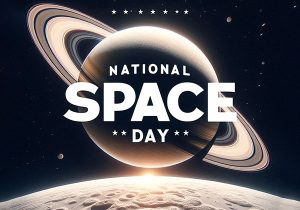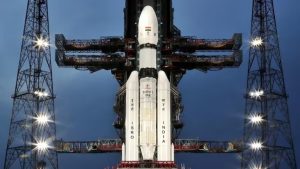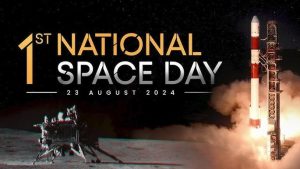DIGITAL NEWS GURU DELHI DESK:
National Space Day: Celebrating India’s Lunar Legacy and Scientific Milestones
Introduction
On August 23, 2024, India celebrated its inaugural National Space Day, a day that marks a significant milestone in the nation’s space exploration journey.
The celebration is anchored in the success of the Chandrayaan-3 mission, which, exactly a year ago, made history by landing near the Moon’s South Pole. This achievement not only placed India among the elite group of nations capable of lunar exploration but also underscored the country’s growing prowess in space science and technology.
The Birth of National Space Day

Prime Minister Narendra Modi announced August 23 as National Space Day, lauding the efforts of the Indian Space Research Organisation (ISRO) and its scientists. The Chandrayaan-3 mission was a momentous achievement, as India became the first nation to successfully land a spacecraft near the Moon’s South Pole—a region that has fascinated scientists for decades due to its potential water ice reserves and unique environment.
The decision to celebrate this day annually reflects the Indian government’s commitment to fostering a culture of scientific inquiry and innovation. National Space Day is not only a tribute to ISRO’s achievements but also serves as an inspiration for future generations to pursue careers in space science, engineering, and technology.
Chandrayaan-3: A Landmark Mission

Chandrayaan-3’s success is a testament to India’s growing capabilities in space exploration. The mission involved the deployment of the Vikram lander and the Pragyan rover, both of which were equipped with advanced scientific instruments designed to explore and analyze the lunar surface.
One of the most significant findings from the mission was the drastic temperature variations on the lunar surface near the South Pole. ISRO reported that temperatures at the surface reached 50 degrees Celsius during the lunar day, but just 10 centimeters beneath the surface, temperatures plummeted to -10 degrees Celsius. This discovery highlighted the extreme environmental conditions that exist on the Moon, particularly in the polar regions.
Another groundbreaking discovery was the detection of a ‘moonquake’ by the Instrument for Lunar Seismic Activity (ILSA) payload on the Vikram lander. This was the first time that seismic activity had been recorded on the Moon using Micro Electro Mechanical Systems (MEMS) technology. The data collected from this event is expected to provide valuable insights into the Moon’s geological activity, further enhancing our understanding of its internal structure.
Scientific Contributions and Future Prospects

One of the most remarkable scientific achievements of the Chandrayaan-3 mission was the in-situ measurement of the elemental composition of the lunar soil near the South Pole. The Pragyan rover’s Laser-Induced Breakdown Spectroscopy (LIBS) instrument confirmed the presence of sulfur, an element that plays a critical role in understanding the Moon’s volcanic history and potential resources.
These findings not only contribute to the global scientific community’s understanding of the Moon but also have potential implications for future lunar missions, including human exploration. The South Pole is considered a prime candidate for future lunar bases due to its potential water ice deposits, which could be used for sustaining human life and producing rocket fuel.
Looking forward, ISRO is expected to continue its lunar exploration efforts with the Chandrayaan-4 mission, which aims to further explore the South Pole region. Additionally, India is collaborating with other space agencies, such as NASA and the European Space Agency (ESA), to share data and resources, fostering a spirit of international cooperation in space exploration.
Inspiring a Nation

National Space Day is not just about celebrating past achievements; it is about inspiring a new generation of scientists, engineers, and explorers. The day is being marked with a series of educational events, workshops, and exhibitions across the country, aimed at sparking interest in space science among students and young professionals.
Schools and universities are organizing special programs to educate students about India’s space journey and the importance of scientific research. These initiatives are part of a broader effort by the Indian government and ISRO to promote STEM (Science, Technology, Engineering, and Mathematics) education, recognizing that these fields are crucial for the country’s future development.
Conclusion

National Space Day stands as a symbol of India’s aspirations and achievements in space exploration. It is a day to honor the dedication and ingenuity of the scientists and engineers who have propelled the country to the forefront of space research. As India looks to the future, National Space Day will continue to inspire and challenge the nation to reach new heights in the exploration of the final frontier.
This annual celebration not only commemorates the success of the Chandrayaan-3 mission but also reinforces India’s commitment to becoming a leading player in the global space community. With ambitious plans for future missions and a growing interest in space science among the youth, National Space Day is set to become a cornerstone of India’s scientific and cultural calendar.
YOU MAY ALSO READ: PM Modi’s Historic Visit to Ukraine: A New Chapter in India-Ukraine Relations








